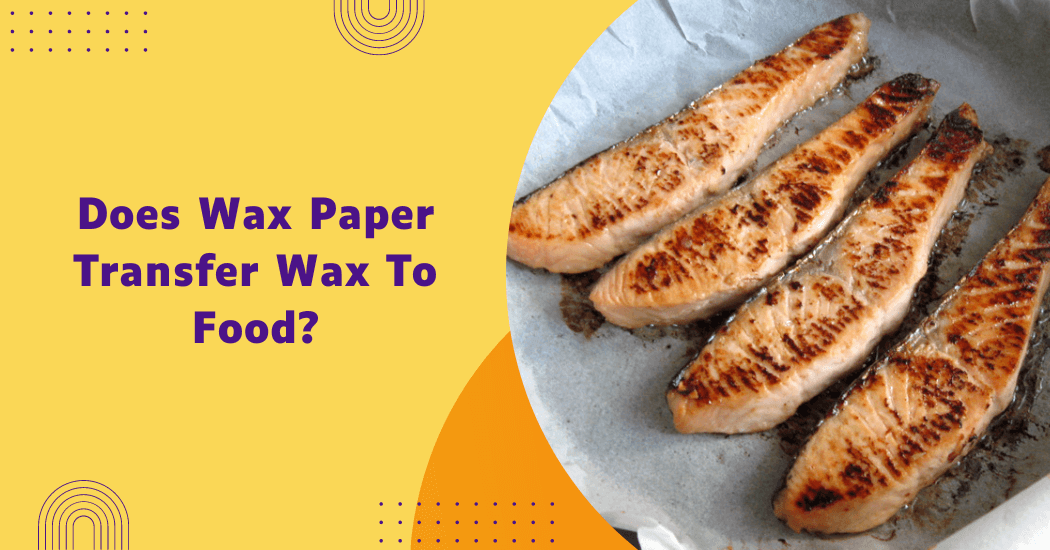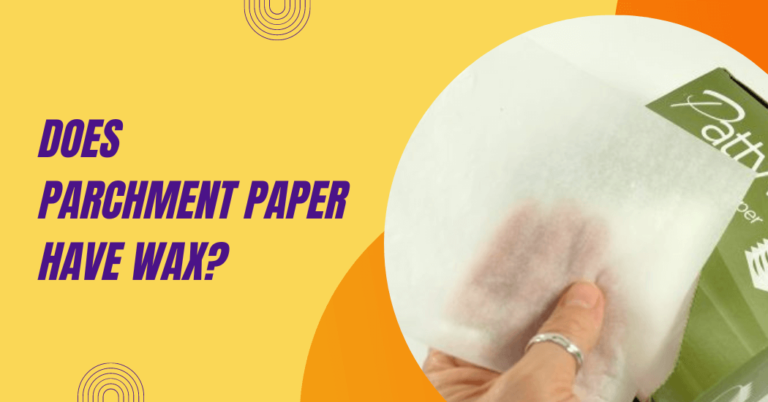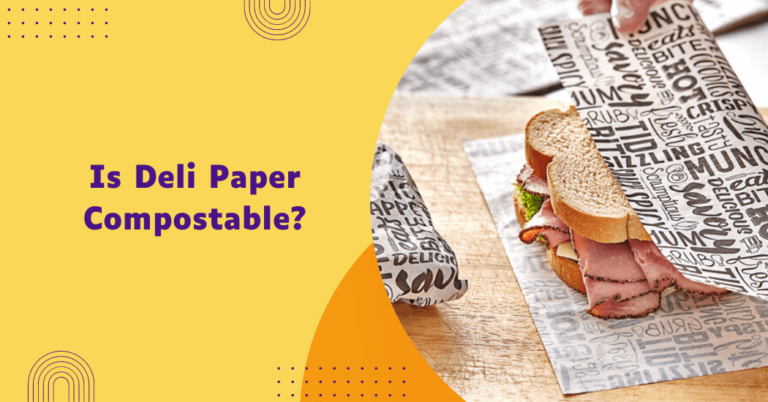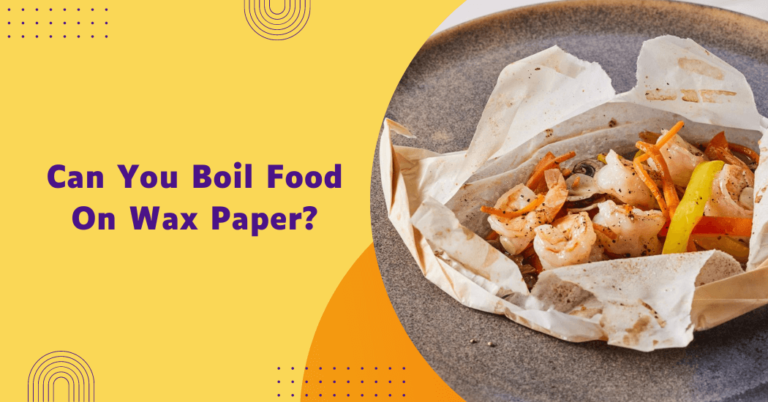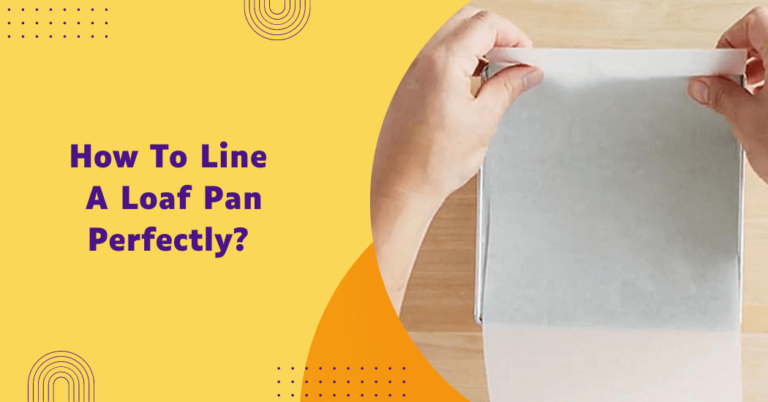Does wax paper transfer wax to food?
In the culinary world, wax paper is a common household item utilized for various purposes, from lining baking trays to wrapping sandwiches.
However, a question often surfaces among health-conscious cooks and bakers: “Does wax paper transfer to food?”
This concern arises due to the potential of wax coating melting when exposed to heat and subsequently adhering to the food.
In this post, we will delve into the composition of wax paper and its recommended uses and explore the circumstances under which it is safe or risky to let food come in contact with wax paper.
Understanding the properties of wax paper is crucial to ensuring that its usage in the kitchen does not compromise the safety and quality of our food.
Does wax paper transfer to food?
Yes, wax paper can transfer to food, particularly when exposed to heat, as the wax coating can melt and may stick to the food. This is why it’s generally advised not to use wax paper for baking or any cooking method where it would be subjected to high temperatures.
However, for cold applications and food storage, wax paper is considered safe and should not be transferred to food.
How does wax paper transfer to food?
The transfer of wax from paper to food occurs primarily due to the melting point of the wax used to coat the paper. Paraffin wax, commonly employed for this purpose, begins to melt at temperatures above 99 degrees Fahrenheit (37 degrees Celsius).
When wax paper is exposed to heat, as it might be in an oven, the wax softens and becomes more likely to stick to food surfaces. This can particularly happen if the food is hot, moist or greasy, which further lowers the melting point of the wax.
Moreover, direct contact between the food and the wax paper, under pressure such as when used for rolling out dough, could also result in transfer. It’s essential to note, that while a small amount of wax transfer is generally considered non-toxic, it’s not ideal for consumption and hence, correct usage of wax paper is key to preventing this from occurring.
Potential health concerns of wax paper transfer to food
The potential health risks associated with consuming small amounts of transferred wax from wax paper are minimal, as the primary component of paraffin wax is a hydrocarbon that is not absorbed by the body.
However, ingesting even trace amounts could lead to an adverse reaction for individuals who may be sensitive or allergic to certain chemicals used in paraffin wax production.
Ingesting large quantities of wax could also lead to gastrointestinal issues. Therefore, it’s best to avoid consuming any transferred wax from wax paper as a precautionary measure.
Alternatives to wax paper
| Alternative | Properties | Heat resistance | Ideal usage |
|---|---|---|---|
| Parchment paper | Silicone-coated, non-stick, moisture-resistant | Withstands temperatures up to 450 degrees Fahrenheit | Baking, roasting, lining baking sheets |
| Aluminum foil | Metal-based, moldable, heat-conductive | Withstands high heat, can be used for grilling | Wrapping hot foods, lining grills, covering baking dishes |
| Silicone baking mats | Reusable, non-stick, heat-resistant | Generally safe up to 480 degrees Fahrenheit | Lining baking sheets and trays for baking |
| Butter paper | Thin paper, non-stick by nature due to fat content | Not recommended for high heat, can withstand light warmth | Wrapping and storing fatty foods like butter, cheeses |
| Plant-based waxes | Derived from soy or other plants, eco-friendly | Melting points vary, generally lower than paraffin | Wrapping foods, covering containers, not suitable for high heat |
| Beeswax wraps | Reusable, made from cotton and beeswax, eco-friendly | Not suitable for high heat, can be molded and shaped around food | Wrapping and storing foods, covering containers |
| Glass containers | Durable, non-toxic material, microwave-safe | Withstands high heat but not recommended for stovetop or oven | Storing and reheating food, marinating |
| Food storage bags | Plastic or silicone material, sealable | Varies depending on type of bag, not suitable for high heat | Storing and freezing foods, transporting snacks or sandwiches |
How to prevent wax paper from transferring to food?
To avoid wax paper melting and transfer, here are some tips to keep in mind:
- Use parchment paper instead for baking: Unlike wax paper, parchment paper has a silicone coating that allows it to withstand high temperatures without melting or sticking. It is perfectly safe for use in the oven.
- Keep wax paper away from heat sources: Avoid placing wax paper too close to heating elements in the oven or using it on hot surfaces, such as a stovetop. This will help prevent any melting or transfer of wax coating.
- Use appropriately for food storage and wrapping: Wax paper is great for storing sandwiches, cheese or cold foods like brownies but it should not be used for hot or greasy foods.
- Do not reuse wax paper: Wax paper is typically designed for single use. Reusing it can increase the risk of transferring wax to food and also affect its integrity, making it prone to tearing and potential contamination.
By following these tips and using wax paper correctly, you can prevent any transfer of wax to food and ensure the safety and quality of your meals.
Expert opinions on wax paper transfer to food
We reached out to experts in the field of kitchen and food safety for their opinions on wax paper transfer to food.
Here’s what they had to say:
- According to the FDA, “Food that is wrapped well does not pose a risk for containing wax that will catch fire or melt onto the product since the wax can’t reach ignition or melting temperature.” This means that if used appropriately and not exposed to high heat, wax paper is safe to use for food storage and wrapping.
- However, the FDA also advises against using wax paper in the oven or on hot surfaces as it could cause fires or transfer of wax to food. They recommend using parchment paper instead.
- Dr. Donald Schaffner, a professor and extension specialist in food science at Rutgers University, states that wax paper is generally safe for use with non-greasy and cold foods but should not be used with hot or greasy foods. He also recommends using parchment paper instead for baking.
- Chef Jen Karetnick, a culinary instructor and cookbook author, suggests avoiding direct contact between food and the wax side of wax paper to prevent transfer. She also recommends using parchment paper for baking and greasy foods.
- Registered Dietitian Rachel Fine, MS, RD, CDN, advises against reusing wax paper due to the potential risk of transferring wax to food. She also recommends opting for naturally derived waxes or alternative options like beeswax wraps for a more eco-friendly choice.
FAQs – Wax Paper Transfer Wax to Food
Can you put wax paper in the microwave?
Wax paper can generally be used in the microwave because microwaves typically don’t reach temperatures high enough to melt the wax coating.
It’s safe for reheating or defrosting; however, it should not be used for cooking foods that require high heat or longer microwave times.
Is wax paper suitable for wrapping all types of food?
Wax paper is best used for wrapping dry foods or those with minimal moisture content. It’s not ideal for wrapping very moist, hot or greasy foods as this could increase the risk of the wax melting and transferring to the food.
Can consuming wax from wax paper lead to long-term health issues?
While consuming small quantities of wax from wax paper is generally considered non-toxic and does not lead to long-term health issues, it’s always preferable to prevent wax transfer to foods to avoid any potential short-term digestive discomfort.
Are there any environmental concerns related to using wax paper?
Environmental concerns related to wax paper include the fact that it is not recyclable due to its wax coating and it is not biodegradable. If environmental impact is a concern, it’s better to use alternatives like beeswax wraps or silicone baking mats which are more eco-friendly.
Conclusion
Wax paper is a useful and versatile material for food storage and preparation. Its non-stick properties and moisture resistance make it ideal for wrapping and covering foods to prevent stickiness.
However, it’s important to use wax paper correctly and with caution to avoid any potential health concerns or transfer of wax coating to food.
By following tips such as using parchment paper for baking and avoiding high heat, you can prevent wax paper from melting and transferring to food.
Additionally, by exploring alternative materials like parchment paper and silicone baking mats, you can find suitable options that meet your needs and preferences.
Ultimately, proper use of wax paper can help ensure the safety and quality of your meals. So next time you’re in the kitchen, remember to use wax paper wisely and consider trying out one of these alternatives for your food storage and preparation needs.
